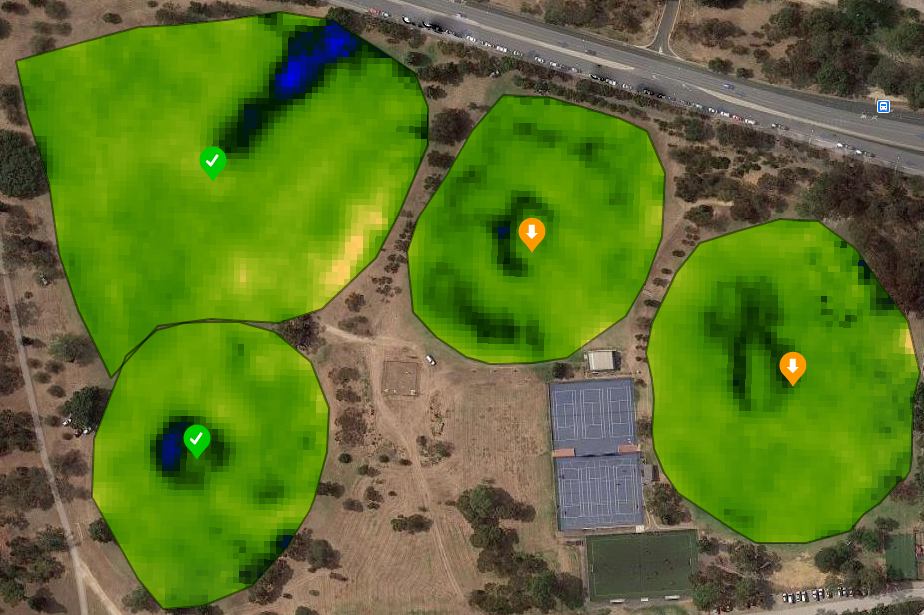Description of Health Indexes available via SWAN Systems
With the March 2021 release of SWAN Systems came a whole new suite of health indexes to assist you in monitoring the health of your plants. To find out which one is best suited to your needs, please refer to the list below.
NDVI – Normalised Difference Vegetation Index
NDVI, sometimes called a “greenness index”, is an index derived from measurements of red and near-infrared light. Values range from 0 to 1, with higher results indicating that more chlorophyll is present in a crop and thus more healthy vegetation (biomass). It is suitable for short crops.
GNDVI – Green Normalised Difference Vegetation Index
GNDVI is similar to NDVI but uses measurements of green and near-infrared bands to produce a value between 0 and 1, with higher values indicating more biomass. It is suitable for tall crops such as sugar cane or sorghum as it does not saturate as quickly as NDVI.
MSAVI – Modified Soil Adjusted Vegetation Index
Like NDVI but modified to correct for soil brightness where there is extensive bare ground. Use this when vegetation covers 15% or less of the surface area, with bare soil in between. Values range from 0 to 1 with higher numbers indicating more biomass.
EVI – Enhanced Vegetation Index
This index corrects NDVI results for both atmospheric influences and soil background signals, especially in areas of dense canopy. Use this index where there is a large amount of green vegetation such as forests or large tree crops, and preferably with minimum topographic effects (not mountainous regions). Values range from -1 to 1.
SIPI – Structure Insensitive Pigment Index
This index is good for analysis of vegetation with high variability of canopy structure. Unlike many other indexes including NDVI, the indication of plant stress increases as the index increases. Values range from 0 to 2.
ARVI – Atmospherically Resistant Vegetation Index
Similar to NDVI, this index is adjusted for atmospheric factors such as aerosols, with values between 0 and 1. The ARVI is also more resistant to topographic effects than other indexes, making it suitable for mountainous regions, particularly where there is frequent pollution of the atmosphere, for example from burning.
NDMI – Normalised Difference Moisture Index
An indication of the water content of vegetation, using the near-infrared and shortwave-infrared (SWIR) bands, with values range of 0 to 1. At present SWIR is only available in SWAN on Landsat-8 and Sentinel-2.

